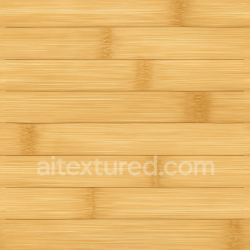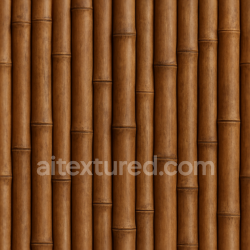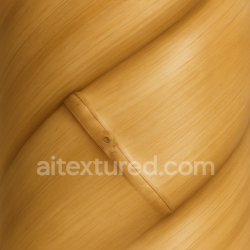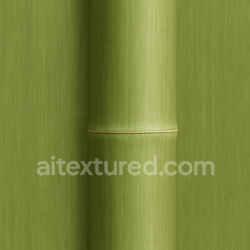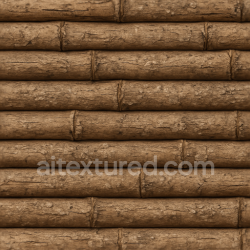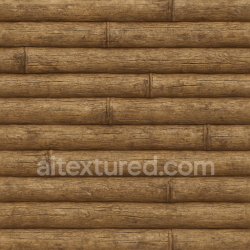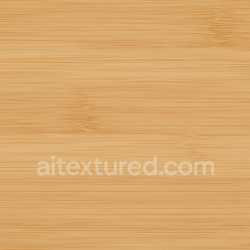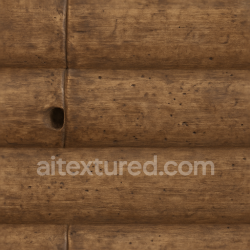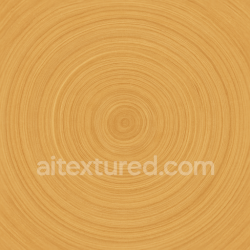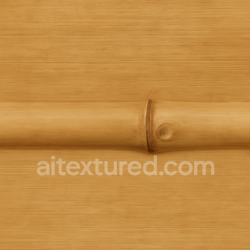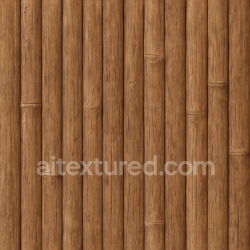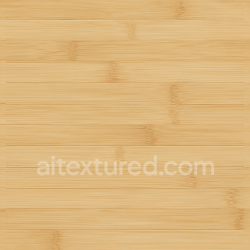Seamless PBR Tire Print Textures for Realistic 3D Modeling and Rendering
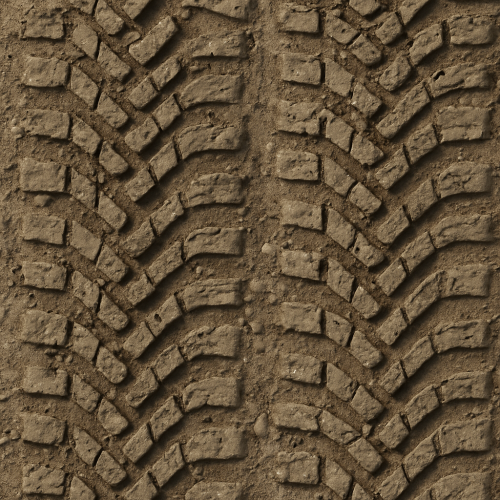
Capturing tire print textures for physically based rendering (PBR) workflows demands a meticulous approach to acquisition that balances fidelity, surface variation, and practical constraints inherent to outdoor environments. The goal is to acquire data that faithfully represents the complex interplay of material properties—such as albedo, roughness, and height—across diverse substrates like mud, gravel, sand, and snow, while ensuring the resultant textures integrate seamlessly into real-time engines like Unreal Engine or offline packages such as Blender’s Cycles renderer.
Photogrammetry remains one of the most accessible and effective methods for capturing tire print textures, especially when the prints are situated on heterogeneous surfaces with subtle micro-topography. High-resolution image sets taken under controlled lighting conditions facilitate the reconstruction of detailed geometry and surface reflectance maps. For tire tracks, the principal challenge lies in capturing the nuanced relief of tread patterns embedded in substrates that often possess variable moisture content and granularity. Employing a diffuse, overcast lighting environment minimizes strong shadows that can obscure fine details in the print, while a polarizing filter helps reduce specular highlights on wet or icy surfaces, preserving color fidelity in the albedo capture.
To maximize detail, it is critical to maintain a consistent camera distance and angle, ideally normal to the surface plane, while capturing overlapping images at multiple scales. Close-up macro shots complement wider contextual images, enabling the generation of height maps with sufficient resolution to resolve individual tread edges and substrate displacement. Using a turntable is impractical in the field; therefore, image acquisition protocols must be carefully planned to ensure sufficient coverage and parallax for robust 3D reconstruction. Post-process calibration of the photogrammetry model is essential to remove any distortions and to align the geometry with the real-world scale, ensuring that the height and normal maps produced accurately represent the depth and orientation of the tire tread relative to the surface.
For substrates such as snow and mud, where surface reflectance can vary significantly across the print due to compaction and moisture gradients, capturing additional data beyond standard RGB imagery is beneficial. Incorporating multispectral or near-infrared imaging can help differentiate between substrate materials and compaction states, which can later inform custom roughness or subsurface scattering maps. In snowy environments, the interplay of light scattering and surface roughness requires careful calibration of roughness values derived from observed specular behavior. A handheld spectrometer or gonioreflectometer can be used to acquire empirical roughness and reflectance data, which can then be correlated with the photogrammetry output to enhance the physical accuracy of the PBR texture maps.
Scanning technology offers an alternative or complementary approach, especially when photogrammetry is limited by environmental conditions or when ultra-high fidelity surface detail is required. Structured light scanners or laser scanners can capture precise surface geometry with micron-level accuracy. For tire prints embedded in granular media like gravel or sand, structured light scanning can delineate subtle depressions and displaced particles that photogrammetry may smooth over due to image noise or insufficient feature contrast. The resulting high-resolution point clouds are invaluable for generating displacement and normal maps that convey the tactile complexity of the print, crucial for realistic shading and dynamic lighting in PBR workflows.
However, scanning muddy or wet substrates introduces challenges related to surface reflectivity and absorption of laser light. In these cases, applying a removable matte coating (such as a fine powder spray) can improve scan quality but may alter the surface’s optical characteristics. Hence, it is advisable to capture albedo and roughness data separately using calibrated photography before scanning, later combining datasets in the texturing pipeline. For snow, cold temperatures and surface frost can interfere with scanning accuracy; scanning should be performed promptly post-track formation to minimize degradation of surface features.
Integrating photogrammetry and scanning datasets requires careful mesh optimization and retopology to balance fidelity with performance constraints typical of game engines or real-time visualization platforms. High-resolution scans often produce dense meshes unsuitable for direct use; decimation and normal map baking from high-poly to low-poly models preserve detail while ensuring efficient rendering. When authoring PBR textures in Blender or Unreal Engine, it is crucial to align texture UV layouts with the underlying mesh to prevent stretching or artifacts, especially given the irregular and complex shapes of tire prints.
Tiling is a significant consideration for tire print textures intended for large-scale environments. Because real tire tracks rarely repeat identically, introducing micro-variation through procedural noise overlays, vertex color masks, or secondary detail maps helps break spatial repetition and enhances perceived realism. Techniques such as blending multiple scan-derived height maps or layering dirt and debris maps can simulate environmental effects like partial erosion, drying mud cracks, or snow melt, adding temporal variability to the texture set.
Ambient occlusion (AO) maps are particularly important for tire prints as they accentuate the depth of tread grooves and substrate depressions, reinforcing three-dimensionality under diffuse lighting. AO can be baked from the high-poly scanned mesh or derived from photogrammetry-generated geometry. Combining AO with height and normal maps in shader setups enables dynamic interaction with scene lighting, improving the visual integration of tire prints into varied environments.
Calibration of texture maps to ensure physically accurate reflectance is non-trivial. Reference materials for substrates—captured with known reflectance standards—aid in adjusting albedo and roughness levels to match environmental lighting and material behavior. For example, muddy tire prints generally exhibit lower albedo and higher roughness values than prints on dry sand, which are brighter and exhibit stronger specular highlights. Metallic maps are typically unnecessary unless the tire print contains debris or contaminants like oil or metal fragments; in such cases, localized metallic masks can be painted or generated procedurally to reflect these anomalies.
Ultimately, the acquisition of tire print textures for PBR workflows demands a multi-modal approach, combining photogrammetry’s contextual color and geometry capture with scanning’s precision in surface detail. Practical considerations—such as surface preparation, lighting control, and environmental timing—play pivotal roles in achieving usable datasets. Post-processing techniques that blend and optimize these data streams ensure that tire prints integrate convincingly within digital environments, retaining their characteristic depth, material variation, and environmental interaction across platforms like Unreal Engine and Blender. This rigor in acquisition and authoring translates directly into enhanced realism and immersion in any project leveraging tire print PBR textures.
Creating realistic tire print textures within a PBR workflow demands a nuanced approach to both the source data and the authoring techniques employed. Tire prints are inherently complex due to their intricate tread patterns, variable pressure distribution, and the environmental context in which they appear—often layered with dirt, mud, or water. To authentically replicate these characteristics, artists frequently employ a hybrid methodology combining procedural generation with photographic acquisition, enabling control over both the macro patterns and subtle micro-variations essential for believable surface detail.
Beginning with photographic authoring, high-resolution captures of actual tire prints provide invaluable albedo data and serve as a foundation for accurate pattern replication. The challenge lies in isolating the tire print from its substrate—whether asphalt, mud, or sand—which requires careful lighting and exposure to minimize shadows and reflections that can distort base color fidelity. Utilizing polarized light or cross-polarization filters during capture can reduce surface glare, enhancing the clarity of tread impressions. Once acquired, these images are meticulously processed in software such as Adobe Photoshop or Substance Designer to extract critical texture maps: the albedo (base color), ambient occlusion (AO), and height or displacement maps. Height maps, derived via photogrammetry or grayscale conversion of the tread depressions, are particularly important for simulating depth variations in the tire pattern within engines that support parallax or tessellation effects.
Normal maps are frequently generated from the height data using tools like xNormal or the built-in converters in Substance Designer, bridging the gap between geometric detail and shader-driven surface complexity. Roughness maps require careful calibration, as tire prints often exhibit heterogeneous surface properties: the raised tread areas tend to be rougher due to exposure, while the embedded grooves and mud residues may be smoother or glossier depending on moisture content. Photographic data often lacks direct roughness information, so artists must infer or hand-paint roughness values based on the substrate and environmental conditions, using grayscale variations to mimic wetness or dryness. Metalness maps are generally not applicable unless the tire print includes metallic contaminants, but in rare cases such as industrial tires with embedded metallic debris, subtle metallic effects may need to be introduced.
Procedural generation complements photographic data by offering parametric control over the repetition, scale, and deformation of the tread pattern. Procedural authoring is typically conducted in node-based environments like Substance Designer, where the basic tread geometry can be constructed using vector shapes, tiled patterns, and noise functions to emulate the wear and distortion caused by tire rotation and weight. This approach facilitates the creation of seamless tiling textures, essential for large-scale surfaces where repeating tire prints must avoid obvious pattern repetition. Procedural noise layers introduce micro-variation at the pixel level, disrupting uniformity in roughness and height maps to simulate dirt accumulation, surface cracks, or subtle material heterogeneity.
A critical step in procedural workflow is the accurate calibration of scale and proportion to real-world units. This ensures that the texture aligns correctly with 3D models and scene measurements, preventing visual discrepancies when tire prints are projected onto terrain or road surfaces. In Substance Designer, this can be managed by inputting precise millimeter values for tread dimensions and setting consistent texel densities, facilitating seamless integration with engine UV layouts. When integrating photographic and procedural data, artists often use blend nodes to overlay dirt splashes, mud streaks, or overlapping prints on top of the base tread pattern, manipulating opacity and blending modes to replicate environmental interactions. This layering technique is vital for simulating tire prints in dynamic scenarios, such as rain-soaked roads or muddy tracks, where the interaction between tire and substrate evolves spatially.
Optimization plays a significant role in authoring tire print textures for real-time applications. Given the complexity of tread patterns and environmental overlays, texture resolution must balance fidelity with performance constraints. Utilizing channel packing strategies—where roughness, AO, and metallic maps share RGB channels—can reduce texture memory usage without sacrificing visual quality. Additionally, generating mipmaps with preserved normal detail and height fidelity helps maintain consistent appearance across varying camera distances. For engines like Unreal Engine and Blender’s Eevee or Cycles, authoring textures in linear color space with proper gamma correction is crucial to ensure physically accurate lighting responses. Unreal Engine’s material editor supports height blending and world-aligned texture projection, which are advantageous when applying tire print decals or layered materials over uneven surfaces. Using mesh decals or dynamic material instances can further enhance realism by allowing tire print textures to adapt dynamically to deformation or environmental changes.
Micro-variation is essential to avoid repetitiveness in tire prints, especially when tiling across expansive environments. Procedural noise and subtle color shifts introduce natural irregularities such as smudging or partial erosion of tread edges. Additionally, artists often incorporate mask maps to selectively blend different roughness or height values within the print, simulating the effects of tire slip or varying pressure. When photographing tire prints, capturing multiple samples from different locations and lighting conditions enriches the texture library, providing source material for procedural blending and variation. Calibration of these samples against each other ensures consistent exposure and color temperature, facilitating seamless compositing.
In Blender, procedural tire print textures can be authored using the node editor, combining Voronoi, noise, and wave textures to approximate tread patterns. These can be baked into texture maps or used directly within shader graphs. Blender’s displacement modifiers and adaptive subdivision allow for high-fidelity surface detail when paired with height maps. Importantly, integrating photographic textures as image nodes complements procedural detail, providing realistic surface color variations and environmental effects. Shader complexity should be controlled to maintain viewport performance, especially when working with layered materials that simulate mud layering or water pooling.
In summary, the synthesis of photographic and procedural techniques in tire print PBR texturing yields the most versatile and realistic results. Photographic data grounds the textures in real-world detail, while procedural methods provide the flexibility needed to adapt, tile, and enhance these textures within diverse environments. Attention to accurate map extraction, scale calibration, micro-variation, and engine-specific optimizations ensures that tire print textures not only look authentic but also perform efficiently in production pipelines. The careful orchestration of these techniques enables artists to convincingly depict the transient, complex nature of tire impressions and their interaction with varied substrates under a physically based rendering paradigm.
The creation of comprehensive Physically Based Rendering (PBR) maps for tire print textures demands a detailed understanding of the interplay between surface characteristics and light behavior, as well as meticulous attention to the unique tactile qualities that tire prints convey. Each PBR map—albedo, normal, roughness, metallic, and height—serves a distinct purpose in simulating the material response, and their combined accuracy ensures that tire prints maintain visual fidelity across diverse lighting conditions and rendering engines such as Unreal Engine or Blender’s Cycles and Eevee.
Starting with the albedo or base color map, it is crucial to capture the intrinsic color information of the tire print without baked-in shading or lighting effects. Tire prints often consist of rubber residue or displaced dirt and debris, exhibiting subtle color variations rather than vivid hues. When authoring the albedo texture, one should aim to represent the diffuse reflectance of these materials accurately. This typically involves photographing or scanning actual tire prints on various surfaces—concrete, asphalt, or soil—to preserve natural color gradients and granular details. Care must be taken to remove shadows and specular highlights through techniques such as cross-polarized photography or software correction, ensuring the albedo remains neutral and consistent under all lighting conditions. When creating tileable tire print patterns, attention to edge blending and seamless repetition is essential to avoid visual artifacts that break immersion. Incorporating micro-variation in the albedo map, such as slight dirt inclusions or subtle color shifts within the rubber residue, can greatly enhance realism by preventing overly uniform appearance, especially when the texture is tiled extensively.
The normal map is indispensable for simulating the fine relief and depth of tire tread patterns and their imprints on varied substrates. High-resolution scanning or photogrammetry of real tire prints provides an excellent starting point, capturing the intricate ridges, grooves, and displaced material that characterize these textures. However, raw data often requires refinement to emphasize the most visually impactful features while optimizing for real-time rendering constraints. When authoring normal maps, it is important to balance the exaggeration of depth to read well in-game without introducing unnatural distortions or causing lighting inconsistencies. For instance, the edges of tire tread patterns should have crisp, well-defined normals to simulate sharp transitions, while areas of compressed dirt or soil might have smoother gradient normals to convey material deformation. Normal map calibration against a flat reference surface and iterative testing under different light angles in the target engine (Unreal Engine’s material preview or Blender’s viewport) helps maintain consistent shading behavior. Additionally, baking secondary details such as fine cracks, dust accumulation, and micro-pits into the normal map enhances the tactile quality of the tire print.
Roughness maps govern the microsurface scattering of light and are vital for simulating the varying glossiness and wear present in tire prints. Rubber residues tend to have a moderate roughness, exhibiting a slightly matte finish due to their porous nature, while the underlying substrate may range from smooth asphalt to rough concrete or soil, each with its own roughness characteristics. When authoring roughness maps, it is important to avoid uniform values; instead, spatial variation reflecting the heterogeneity of the surface increases realism. For example, the edges of the tread marks, where dirt is compressed or scraped away, might be smoother (lower roughness) due to compacted material, while adjacent soil or dust might be rougher. These subtle distinctions can be derived from grayscale height or ambient occlusion maps, adjusted manually or procedurally to accentuate material diversity. Calibration of roughness values should be performed using reference materials and real-world observations, ensuring the tire print’s gloss varies plausibly when exposed to different lighting environments. Importantly, roughness maps for tire prints rarely require metallic channel usage, as these materials are primarily dielectric and non-metallic.
Metallic maps are generally irrelevant for tire print textures since the materials involved—rubber, dirt, soil—do not exhibit metallic reflectance. However, in rare cases where embedded metallic debris or industrial contaminants are present within the tire print, a localized metallic mask can be authored. This must be approached with caution, as inappropriate metallic values can cause rendering artifacts or unrealistic highlights. Typically, the metallic channel remains uniformly black (zero) for tire print PBR textures.
Height or displacement maps play a critical role in conveying the macro and micro-geometric variations of tire prints, contributing to parallax effects and accurate shadow casting in advanced rendering pipelines. Generating height maps can be achieved through photogrammetry-derived depth data or by converting grayscale images of tire tread impressions into displacement information. The height map should capture the depth of tread indentations, the raised rubber residues, and subtle surface distortions caused by substrate deformation. When authoring these maps, it is essential to maintain relative scale and ensure smooth transitions between high and low areas to prevent rendering artifacts. In engines like Unreal Engine, height maps can be employed in tessellation or parallax occlusion mapping to enhance the realism of tire prints at close viewing distances, while in Blender, displacement modifiers or adaptive subdivision can leverage height data effectively. Optimization considerations include balancing map resolution with performance impact; overly high-resolution height maps may be prohibitive for real-time applications, necessitating the use of normal maps to approximate fine details.
Ambient occlusion (AO) maps, while not strictly part of the core PBR channels, complement the overall appearance of tire prints by simulating self-shadowing in crevices and recessed areas of the tread. Incorporating AO maps improves depth perception and material realism, especially under indirect lighting. AO can be baked from high-poly sculpts or generated from height maps, then combined multiplicatively with the albedo or as a separate input in the material shader. Careful calibration ensures AO values do not overly darken the texture or cause unnatural shading, preserving visual consistency across lighting scenarios.
When integrating these PBR maps into engines such as Unreal Engine or Blender, maintaining consistency and calibration across all maps is paramount. Unreal Engine’s material editor allows real-time previewing of roughness, normal, and displacement maps under various lighting conditions, facilitating iterative adjustments. Similarly, Blender’s node-based shader system enables fine-tuning of map influence through mix and math nodes, allowing artists to balance the appearance of tire prints against environmental lighting and camera angles. In both environments, it is advisable to standardize texture resolution and bit depth across maps to avoid sampling discrepancies. For example, using 16-bit grayscale for roughness and height maps can preserve gradient fidelity, while 8-bit sRGB color spaces suffice for albedo textures.
Tiling and micro-variation strategies are essential for tire print textures, particularly in large-scale environments where repeated patterns risk appearing artificial. Introducing subtle noise, dirt accumulation, or random offsets within the albedo and roughness maps mitigates repetition and enhances naturalism. Procedural texturing techniques or layered blending of scanned data and hand-painted details can generate these variations. Additionally, blending tire print textures with underlying ground materials via masks or vertex painting improves integration, allowing prints to appear partially eroded or overlaid by environmental elements like mud or snow.
Optimization strategies should consider the target platform and rendering pipeline. For real-time applications, compressing texture maps using appropriate codecs (BC5 for normals, BC7 for albedo and roughness) preserves quality while reducing memory footprint. Mipmapping of height and normal maps must be handled carefully to prevent loss of detail at distance, sometimes requiring manually authored lower-resolution maps or detail normal maps to maintain visual coherence.
In summary, the generation of comprehensive PBR maps for tire prints is a multi-faceted process requiring precise capture, authoring, and calibration of albedo, normal, roughness, metallic, and height data. Each map must reflect the nuanced physical and material properties of tire residues and their interaction with varied substrates. Through careful attention to micro-variation, seamless tiling, and engine-specific optimization, tire print textures can achieve a high level of realism and consistency, responding accurately to diverse lighting environments and contributing convincingly to the visual storytelling of a scene.
